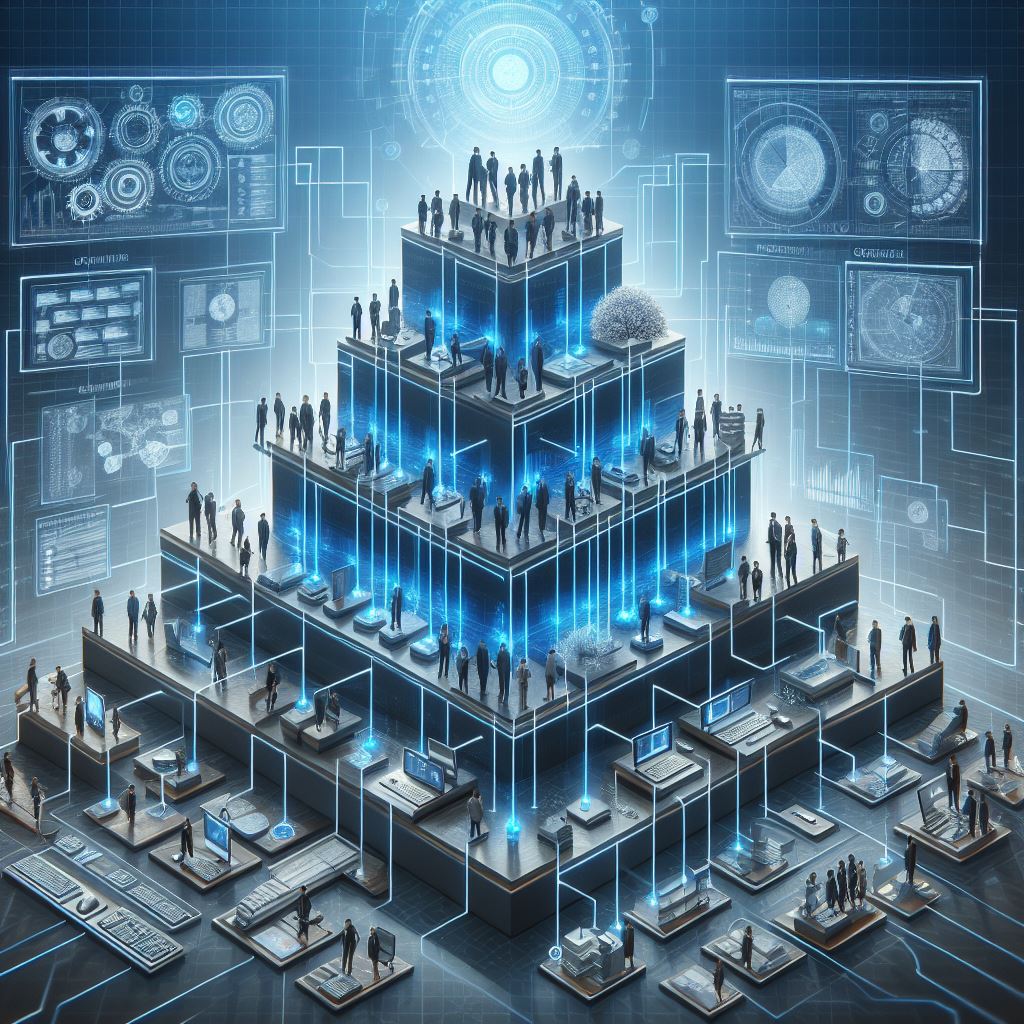
In an evolving and ever-changing business landscape, understanding and improving the organizational structure of organizations becomes crucial to achieving competitiveness and sustainability. The Enterprise Architecture Office plays a key role in this context, as it reflects the organization’s commitment to digital transformation and fine-tuning its internal processes. In this article, we will closely explore the tasks of the Enterprise Architecture Office, and how it contributes to directing systems and organizing processes to improve the organization’s performance and achieve its strategic goals.
Tasks of the Enterprise Architecture Office
- What is enterprise architecture?
- Tasks of the Enterprise Architecture Office
- 1. Developing and updating the organizational structure:
- 2. Analyze and improve internal processes:
- 3. Providing administrative planning standards:
- 4. Providing technological solutions:
- 5. Analyze the gap between the current and the target state:
- 6. Technical maturity assessment:
- 7. Analysis and evaluation of technical risks:
- 8. Top management support:
- 9. Providing a structured understanding of middle management:
- 10. Facilitate understanding for employees:
- 11. Aligning technical needs:
- 12. Understanding services to customers:
What is enterprise architecture?
Enterprise architecture is an operational structure that supports the activities and operations of an organization, and it defines how the various departments and units that make up the organization are arranged and organized. It aims to achieve effective organization and coordination of activities and resources within the organization to achieve the desired vision and strategy. The organizational structure includes several elements, including:
- Organizational structure:
It determines how an organization is divided into departments and units, and how authority and responsibilities flow. - Job ranks:
Determine the jobs and job roles for each employee in the organization. - Hierarchical relationships:
It explains the main relationships between different levels of management within an organization. - Power and control:
It determines how decisions are made and powers are distributed within the organization. - Communication and information flow:
It refers to how information is exchanged within the organization and between various departments. - Administrative planning:
It relates to how we set goals and define strategies to achieve those goals. - Distribution of responsibilities and duties:
Determines the clarity and definition of the responsibilities of each individual or department within the organization.
Tasks of the Enterprise Architecture Office

The tasks of the Enterprise Architecture Office include several activities and functions aimed at improving the organization and enhancing work efficiency in the institution. The following are the tasks carried out by the Enterprise Architecture Office:
1. Developing and updating the organizational structure:
- Provide improvements to the organizational structure to ensure consistency of departments and units.
2. Analyze and improve internal processes:
- Evaluate current operations and develop recommendations to improve efficiency and reduce costs.
3. Providing administrative planning standards:
- Define and provide a framework for effective management planning and coordination with project management.
4. Providing technological solutions:
- Providing the technology and systems necessary to improve the organization’s operations and facilitate decision-making.
5. Analyze the gap between the current and the target state:
- Provide comprehensive analysis to identify gaps between current performance and target performance.
6. Technical maturity assessment:
- Evaluate the readiness of the technology used and identify areas that can be improved.
7. Analysis and evaluation of technical risks:
- Analyze technical risks and develop strategies to deal with them.
8. Top management support:
- Providing information and reports that support strategic decision-making to senior management.
9. Providing a structured understanding of middle management:
- Improve middle management’s understanding of business organization and facilitate communication.
10. Facilitate understanding for employees:
- Provide guidance and training to employees on the use of technologies and systems.
11. Aligning technical needs:
- Providing technology support to ensure that daily business needs and requirements are met.
12. Understanding services to customers:
- Providing information to customers about the services provided and ensuring their maximum benefit.